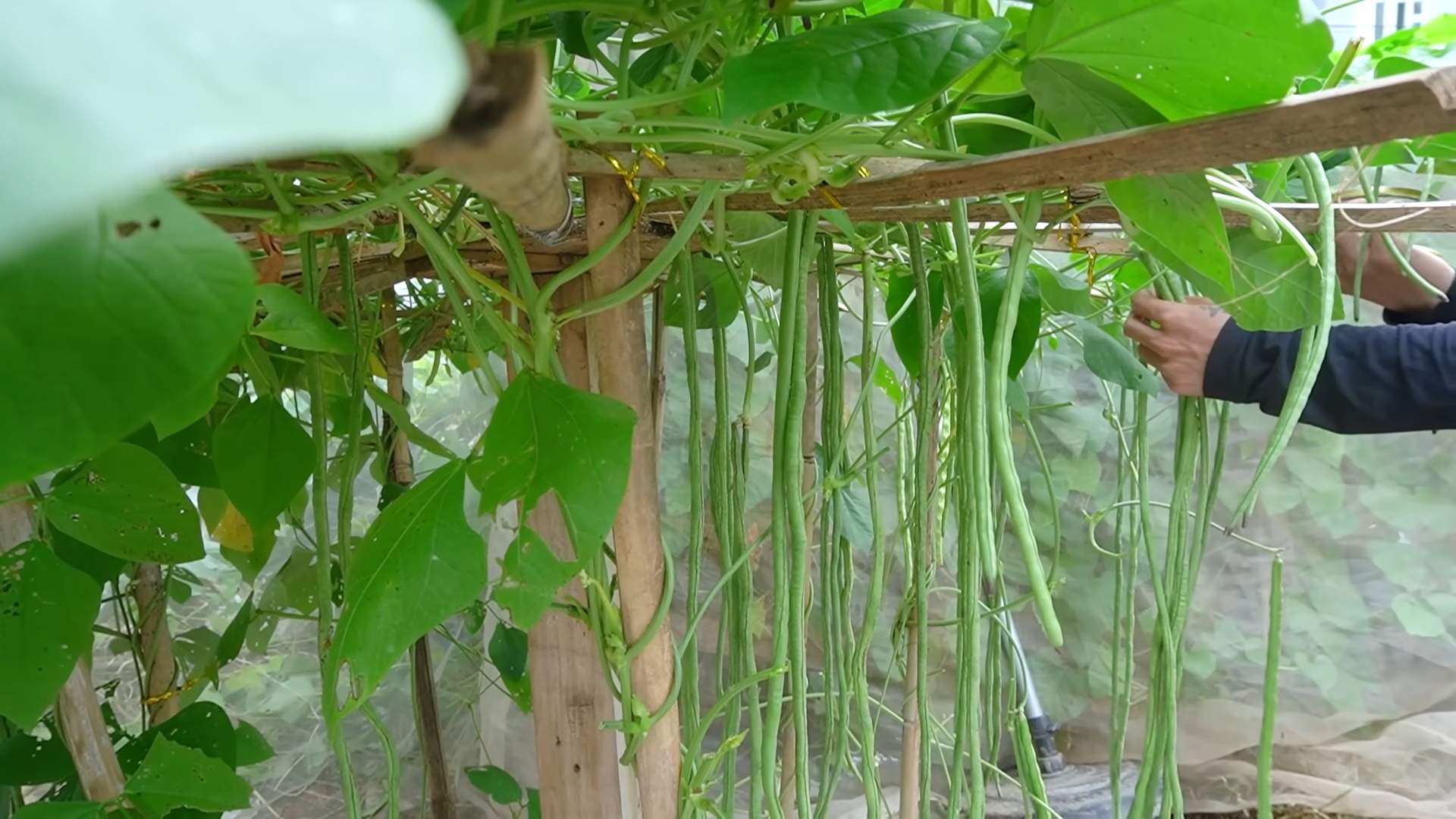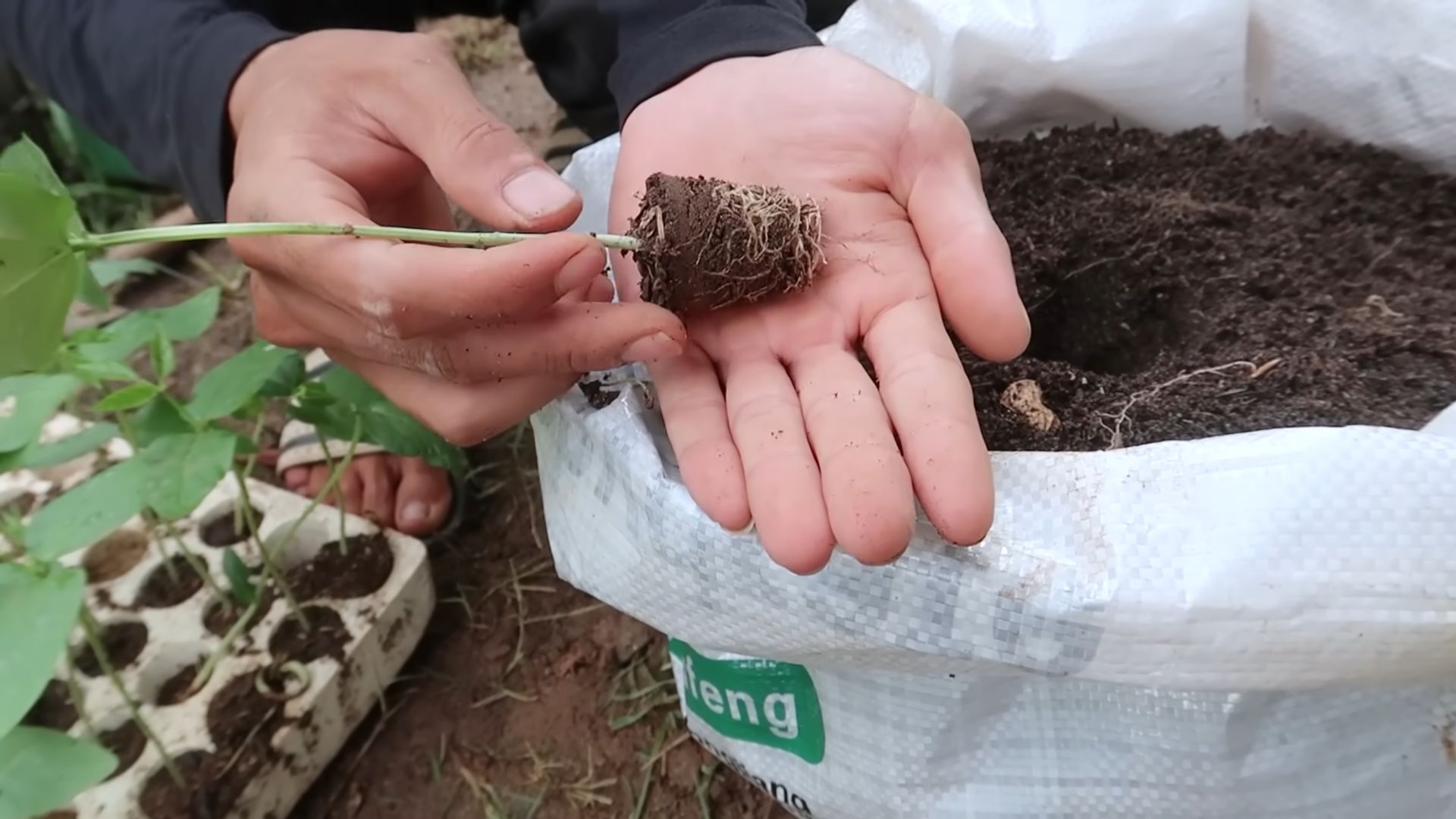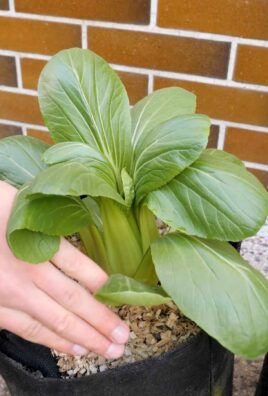Grow Long Beans, and you’ll unlock a world of culinary possibilities right in your backyard! Imagine stepping outside and harvesting these incredibly versatile vegetables, ready to be stir-fried, steamed, or added to your favorite soups and stews. But let’s be honest, getting those long, luscious beans can sometimes feel like a challenge. That’s where these DIY tricks and hacks come in – I’m here to share my secrets to a bountiful harvest!
Long beans, also known as yardlong beans or asparagus beans, have a rich history, particularly in Asian cuisine. They’ve been cultivated for centuries and are a staple in many cultures, prized for their unique texture and flavor. But you don’t need to be a seasoned gardener to enjoy them.
Why are these DIY tricks and hacks essential? Because let’s face it, gardening can be tricky! Pests, diseases, and unpredictable weather can all threaten your precious plants. These simple, yet effective, techniques will help you overcome common challenges and grow long beans that are the envy of the neighborhood. I’ll guide you through everything from soil preparation to trellising techniques, ensuring you have all the knowledge you need for a thriving long bean patch. Get ready to roll up your sleeves and get growing!

DIY: Grow Your Own Bountiful Long Beans!
Hey there, fellow gardening enthusiasts! I’m so excited to share my tried-and-true method for growing long beans – those ridiculously fun, extra-long veggies that are as delicious as they are impressive. Forget buying them at the store; with a little effort, you can have a thriving long bean patch right in your backyard (or even on your balcony!). I promise, the satisfaction of harvesting your own homegrown long beans is totally worth it.
What You’ll Need: The Essentials
Before we dive in, let’s gather our supplies. Here’s a checklist of everything you’ll need to successfully grow long beans:
* Long Bean Seeds: Obviously! Choose a variety that suits your climate. I personally love the ‘Yard Long’ variety, but there are many others to explore.
* Well-Draining Soil: Long beans aren’t picky, but they do need soil that drains well. A mix of garden soil, compost, and a little bit of sand works wonders.
* Compost or Aged Manure: This is crucial for providing your long beans with the nutrients they need to flourish.
* Trellis or Support Structure: Long beans are climbers, so they need something to climb on. A trellis, fence, or even sturdy bamboo poles will do the trick.
* Gardening Gloves: Protect those precious hands!
* Watering Can or Hose: For keeping your long beans hydrated.
* Hand Trowel or Shovel: For planting and amending the soil.
* Optional:
* Seed starting trays and potting mix (if starting seeds indoors).
* Organic fertilizer (for an extra boost).
* Mulch (to retain moisture and suppress weeds).
Getting Started: Planting Your Long Beans
There are two main ways to get your long bean journey started: direct sowing and starting seeds indoors. I’ll walk you through both!
Direct Sowing (The Easier Route)
This is my preferred method, especially if you live in a warmer climate with a long growing season.
1. Choose the Right Time: Long beans are warm-weather lovers, so wait until the soil has warmed up to at least 65°F (around 18°C). This is usually a few weeks after the last frost in your area.
2. Prepare the Soil: Select a sunny spot in your garden that gets at least 6-8 hours of sunlight per day. Clear the area of any weeds or debris. Dig in plenty of compost or aged manure to enrich the soil. This will give your long beans a great head start.
3. Sow the Seeds: Create small mounds of soil about 1 inch (2.5 cm) high and 12-18 inches (30-45 cm) apart. Plant 2-3 seeds per mound, about 1 inch deep.
4. Water Gently: Water the soil thoroughly but gently, being careful not to wash away the seeds.
5. Thin Seedlings (If Necessary): Once the seedlings emerge and have a few true leaves, thin them out to one strong seedling per mound. Choose the healthiest-looking one and gently snip off the others at the soil line.
Starting Seeds Indoors (For a Head Start)
If you live in a cooler climate or want to get a jump start on the growing season, starting seeds indoors is a great option.
1. Sow Seeds in Trays: Fill seed starting trays with a good quality potting mix. Sow 2-3 seeds per cell, about 1 inch deep.
2. Water and Provide Warmth: Water the trays gently and place them in a warm location, such as on top of a refrigerator or near a heat vent. You can also use a heat mat to speed up germination.
3. Provide Light: Once the seedlings emerge, move them to a sunny windowsill or under grow lights. They need at least 6-8 hours of light per day.
4. Harden Off Seedlings: Before transplanting the seedlings outdoors, you need to “harden them off.” This means gradually exposing them to outdoor conditions over a period of 7-10 days. Start by placing them outside for an hour or two each day, gradually increasing the amount of time they spend outdoors.
5. Transplant Seedlings: Once the seedlings are hardened off and the soil has warmed up, transplant them into your garden. Follow the same steps as for direct sowing, planting them in mounds about 12-18 inches apart.
Setting Up the Support System: Trellis Time!
Long beans are vigorous climbers, so they need a sturdy support system to grow on. I’ve tried a few different methods, and here’s what I’ve found works best:
* Trellis: A sturdy trellis is a great option. You can buy a pre-made trellis or build your own using wood or metal. Make sure the trellis is tall enough to accommodate the long beans, which can grow up to 8 feet (2.4 meters) or more.
* Fence: If you have a fence in your garden, you can use it as a support for your long beans. Simply plant the seeds or seedlings near the fence and train the vines to climb up.
* Bamboo Poles: Bamboo poles are a cheap and easy option. Simply drive the poles into the ground and tie them together to create a teepee-like structure.
* String or Wire: You can also use string or wire to create a support system. Simply tie the string or wire to stakes or posts and train the vines to climb up.
Important Tip: Install your support system *before* the long bean vines start to grow. This will make it easier to train them to climb and prevent them from sprawling on the ground.
Nurturing Your Long Beans: Care and Maintenance
Once your long beans are planted and have a support system in place, it’s time to focus on care and maintenance. Here’s what you need to do to keep your long beans happy and healthy:
1. Watering: Long beans need consistent moisture, especially during hot, dry weather. Water them deeply and regularly, especially when they are flowering and producing pods. Aim for about 1 inch (2.5 cm) of water per week. I like to water in the morning so the foliage has time to dry before nightfall, which helps prevent fungal diseases.
2. Fertilizing: Long beans are heavy feeders, so they need regular fertilization. Apply a balanced organic fertilizer every 2-3 weeks, following the instructions on the package. You can also side-dress with compost or aged manure.
3. Weeding: Keep the area around your long beans free of weeds. Weeds compete with the long beans for water and nutrients, and they can also harbor pests and diseases.
4. Mulching: Apply a layer of mulch around your long beans to help retain moisture, suppress weeds, and regulate soil temperature. Straw, wood chips, or shredded leaves are all good options.
5. Pest and Disease Control: Keep an eye out for pests and diseases. Common pests that attack long beans include aphids, bean beetles, and spider mites. Common diseases include powdery mildew and bean rust. If you spot any problems, take action immediately. You can use organic pesticides or fungicides to control pests and diseases. I always prefer organic options whenever possible!
6. Training the Vines: As the long bean vines grow, you’ll need to train them to climb up the support system. Gently guide the vines up the trellis or fence, and tie them in place with soft twine if necessary.
Harvesting Your Bounty: The Fun Part!
This is the moment you’ve been waiting for! Harvesting your own homegrown long beans is incredibly rewarding.
1. When to Harvest: Long beans are typically ready to harvest about 60-70 days after planting. The pods should be long, slender, and firm. They should also snap easily when bent. Don’t let them get too thick or tough, as they will become less flavorful.
2. How to Harvest: Use scissors or pruning shears to cut the pods from the vine. Be careful not to damage the vine.
3. Harvest Regularly: Harvest your long beans regularly to encourage continued production. The more you harvest, the more the plant will produce.
4. Enjoy Your Harvest: Long beans are delicious steamed, stir-fried, or added to soups and stews. They can also be eaten raw in salads.
Troubleshooting: Common Problems and Solutions
Even with the best care, you might encounter some problems along the way. Here are a few common issues and how to address them:
* Poor Germination: If your seeds aren’t germinating, make sure the soil is warm enough and that you’re not overwatering. You can also try soaking the seeds in water for 24 hours before planting to improve germination rates.
* Yellowing Leaves: Yellowing leaves can be

Conclusion
So, there you have it! Growing long beans doesn’t have to be a daunting task relegated to experienced gardeners. With this simple DIY trick, you can unlock the potential for a bountiful harvest, even if you’re a complete beginner. The beauty of this method lies in its accessibility and adaptability. It’s a cost-effective way to maximize your yield, reduce waste, and enjoy the unparalleled satisfaction of eating vegetables you’ve nurtured from seed to table.
Why is this DIY trick a must-try? Because it addresses some of the most common challenges faced when growing long beans: providing adequate support for their vigorous growth, optimizing space in your garden, and ensuring proper air circulation to prevent disease. By creating a sturdy and well-designed trellis system using readily available materials, you’re setting your long beans up for success from the very beginning.
But don’t stop there! Feel free to experiment with variations on this DIY trick to suit your specific needs and preferences. If you have limited space, consider building a vertical tower trellis using bamboo poles or repurposed tomato cages. For a more decorative touch, you could train your long beans to climb along an existing fence or pergola. You can also experiment with different companion plants to deter pests and attract beneficial insects. Marigolds, basil, and nasturtiums are all excellent choices for planting alongside your long beans.
Remember, gardening is a journey of learning and discovery. Don’t be afraid to make mistakes and try new things. The most important thing is to have fun and enjoy the process. We are confident that this DIY trick will significantly improve your success in growing long beans.
We wholeheartedly encourage you to give this DIY trick a try. Once you’ve experienced the joy of harvesting your own homegrown long beans, you’ll never look back. And more importantly, we want to hear about your experience! Share your photos, tips, and stories in the comments below. Let us know what worked well for you, what challenges you faced, and any variations you tried. Your feedback will not only help us improve this guide but also inspire other gardeners to embark on their own long bean growing adventures. Let’s create a community of passionate gardeners who are dedicated to growing delicious and nutritious food right in their own backyards. Happy gardening!
Frequently Asked Questions (FAQ)
What kind of support is best for long beans?
Long beans are vigorous climbers and require strong support to thrive. A trellis is generally considered the best option, as it provides ample vertical space for the vines to grow and allows for good air circulation. However, other options like teepees, fences, or even sturdy branches can also work, as long as they are tall and strong enough to support the weight of the mature vines and beans. The ideal height is at least 6-8 feet. The material should be sturdy enough to withstand wind and the weight of the mature plants.
How often should I water my long beans?
Long beans need consistent moisture, especially during hot and dry weather. Water deeply at the base of the plants whenever the top inch of soil feels dry to the touch. Avoid overhead watering, as this can increase the risk of fungal diseases. Mulching around the base of the plants can help retain moisture and suppress weeds. Generally, watering 2-3 times a week is sufficient, but adjust the frequency based on your local climate and soil conditions.
What are some common pests and diseases that affect long beans?
Common pests that can affect long beans include aphids, bean beetles, spider mites, and leafhoppers. Regularly inspect your plants for signs of infestation and take action promptly. Insecticidal soap, neem oil, or handpicking can be effective for controlling these pests. Diseases that can affect long beans include fungal diseases like powdery mildew and rust. Ensure good air circulation around the plants and avoid overhead watering to prevent these diseases. If necessary, use a fungicide according to the manufacturer’s instructions.
How long does it take for long beans to mature?
Long beans typically take 60-90 days to mature from seed, depending on the variety and growing conditions. You can start harvesting the beans when they are about 12-18 inches long and still tender. Regular harvesting encourages the plant to produce more beans. Overripe beans will become tough and less flavorful.
Can I grow long beans in containers?
Yes, you can grow long beans in containers, but you’ll need to choose a large container (at least 12 inches in diameter) and provide a sturdy trellis for the vines to climb. Use a well-draining potting mix and fertilize regularly with a balanced fertilizer. Container-grown long beans may require more frequent watering than those grown in the ground.
What is the best time to plant long beans?
Long beans are warm-season crops and should be planted after the last frost when the soil has warmed up to at least 60°F (15°C). In most regions, this is typically in late spring or early summer. You can also start seeds indoors 4-6 weeks before the last frost and transplant them outdoors once the weather is warm enough.
What kind of fertilizer should I use for long beans?
Long beans benefit from regular fertilization with a balanced fertilizer (e.g., 10-10-10) or a fertilizer specifically formulated for beans and legumes. Apply fertilizer according to the manufacturer’s instructions, typically every 2-3 weeks during the growing season. Avoid over-fertilizing, as this can lead to excessive foliage growth and reduced bean production.
How do I save seeds from my long beans?
To save seeds from your long beans, allow some of the beans to mature fully on the vine until they are dry and brown. Harvest the pods and shell the seeds. Spread the seeds out on a tray to dry completely for a few days before storing them in an airtight container in a cool, dry place. Properly stored seeds can remain viable for several years.
Are there different varieties of long beans?
Yes, there are several varieties of long beans available, each with its own unique characteristics. Some popular varieties include ‘Yardlong’, ‘Chinese Red Noodle’, and ‘Purple Podded’. Experiment with different varieties to find the ones that grow best in your climate and that you enjoy the most.
What are the benefits of companion planting with long beans?
Companion planting can offer several benefits for long beans, including pest control, improved pollination, and enhanced growth. Some good companion plants for long beans include marigolds, basil, nasturtiums, carrots, and cucumbers. Avoid planting long beans near onions or garlic, as these can inhibit their growth.





Leave a Comment